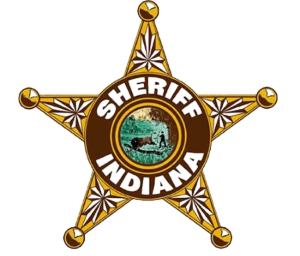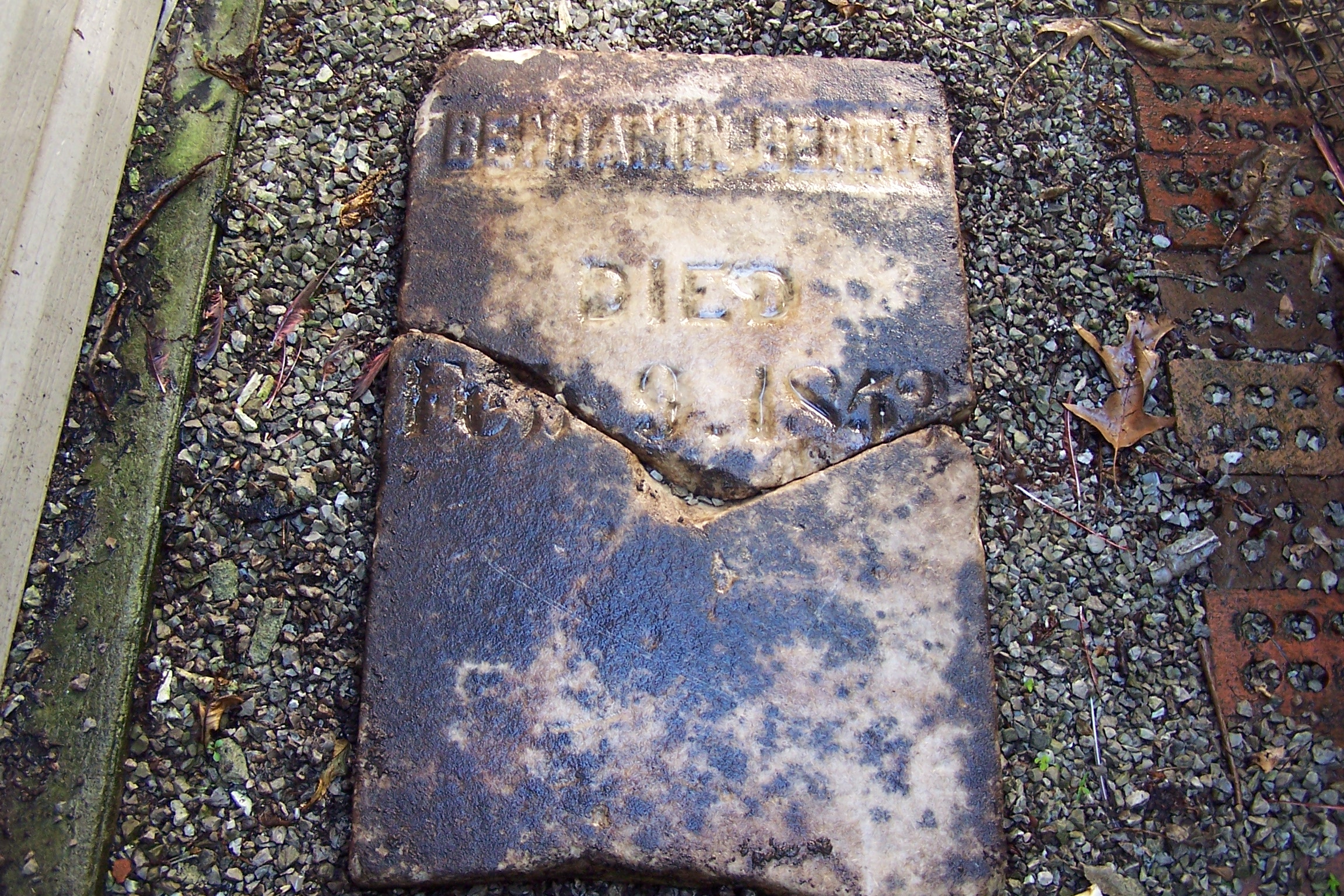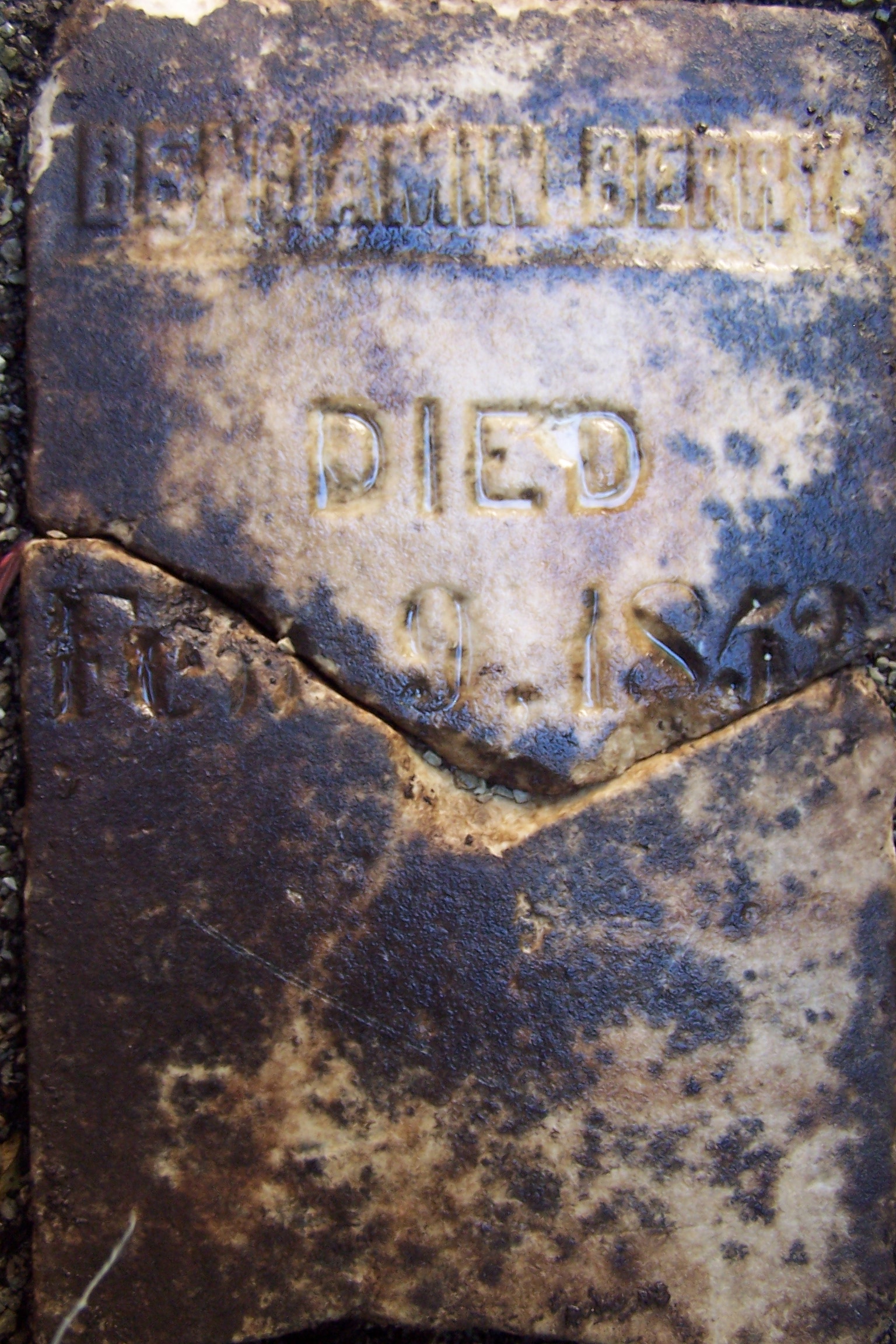Sheriff Benjamin Berry
Born around 1798 and died on February 9, 1853
Served as Sheriff of Grant County from 1831 to 1832
Notable Note:
Was the first Sheriff of Grant County
Story of Benjamin Berry’s family and life in Grant County, Indiana
By Lucy Kimball
When Henry was a boy of 18 years, he took his gun and horse, and ammunition and went to the War of 1812. Sometime later, he came to Wayne County, Indiana bringing his wife and 2 babies, carrying with them what household goods they had. Later, in the year of 1826, he moved his family down the Mississinewa River, on a flat boat, bringing 6 small children aged 9 years down to a few months, thus becoming settlers and pioneers in the true sense. They had four more children born in Grant County, 10 in all, and the children, with one exception, lived all their lives and died in Indiana.
His was the third land grant in the county (1826) bought the East fraction of Section 24 in Pleasant Township, Grant County, Indiana. This farm was given the name Split Rock and he lived upon it until his death and was buried within a stone wall, built by himself, on the farm. There lies his first wife, Elizabeth, the mother of the 10 children and his second wife, Susannah ( Died 3/20/1862).
The first house was built at the top of a ravine, leading to the large split rock, a spring furnishing the water supply. Later the house was built near the river, and the old house was shelter, and the grounds, pasture for sheep. Still later a much larger house was built, but still of logs, near the second one and using the logs from the second one to build a smoke house. It was necessary to dig a well for water supply for the family.
There were only 2 white families in the area at this time. The other inhabitants being Miami Indians with their Chief Meshingomesia. There was an Indian preacher, named Burriett, who came with the Chief and their interpreters, and sometimes spent weeks at a time on the farm, much to the terror of the small children, especially at night.
There were many things to do: the large loom upstairs where the mother wove so many hundreds of yards of cloth, the soap making, the yarn coloring, and many other things through these primitive times. With all the hardships of the wilderness, they had time for worship and baptizing in the river below the house.
One of the enormous problems was meal and flour. David Conner came and built a mill about the year 1830 and had an extensive business. Mills were scarce and country was increasing rapidly in population. Conner had a trading post in connection with the mill, run by Jacob Sprecker, the first settler of Jalapa, Indiana. The mill started with an old corn cracker, but even this was a great help to settlers. The terrain was quite steep at the mill and difficult for a man to carry a large sack of grain on a horse. Often the grain would slide off and it would be necessary to wait until someone came along to help load it again. In 1838 it was hard to obtain meal or flour at any mill in the county as they were of very small capacity, and had very little grain for supplies. At times, families were without means of making bread for weeks at a time. Meat was plentiful and easily obtained, however salt was $13.00 a barrel and at that time postage was 37.5 cents per letter.
There were many animals in Grant County. The black bear was the subject of numerous stories told by hunters, concerning encounters with them. The gray wolf, with a few black species, were very destructive, and it was not uncommon to kill four or five deer in a day. Wild turkeys were many, also black and grey squirrels, destroyed raccoons by the hundreds ad their hides were valuable. There were otters along the streams and their hides brought a good price. Opossums were many in early times, as were wild pigeons moved by tens of thousands in flocks, nearly darkening the sky and their wings made a noise as an enormous wind. There were also panther, mink, muskrat, skunk, weasel, fox, black and white cranes, hawks, owls, kingfishers and snipe. Frogs, turtles and fish in the streams they would seine as many as 3 barrels at a time. There were also many bees. In 1833 a couple found a fallen tree, while they were hunting, and had bees in it. 3 or 4 person went to cute the tree, took out of the tree 3 buckets of honey and a great amount of dry comb from the tree. They had many uses for the dry comb and honey was good food and sweetener. Many times they would get as many as 15 gallons strained, from one trip.
We must not forget the snakes, many, many yellow and black rattlers. One settler told of hunting rattlers along the rocks, finding none, he decided to go to the top of the ledge, leaving the others below to wait. He found 2 piles the size of wash tubs, took a stout stick or pole and started on them. Killed a few and tumbled the others over for the men below to kill.
The county was rich in all kinds of lumber; maple, beech, gray ash, white ash, black ash, white elm, poplar, black walnut, black oak, white oak, hickory, lynn, sycamore and cottonwood. Plenty of beautiful streams with clear fresh water.
The first sheriff of Grant County was Benjamin Berry, the husband of Nancy Renbarger(Nancy and Benjamin married 3/2/1823 in Wayne County), daughter of George and Nancy Renbarger. He was paid $21.25 per year.
Henry Renbarger was on the first planning committee to lay out the roads for Grant County. (Written by Lucy Kimball)
Sheriff Berry's burial site
Our first Sheriff Benjamin Berry was buried in the Berry/Rogers Cemetery in Cass County, Indiana. Here is a story of that cemetery from the Cass County historical website.
private Burial-ground in western Cass County, Ind "The old pioneer-day cemetery on the William Barr Farm." Slightly more than half a mile (as the crow flies) northeast of Lake Cicott, in central Jefferson Township. Many years ago, in building or widening this east-to-west road sometimes called the "Pisgah Church road, workmen out through some high ground and created a steep bluff (between 15 and 20 feet high) immediately north of road. On so doing, they must have cut into the south edge of cemetery; for a number of bones and at least one human skull rolled down into the road. This occurred circum 1900.
This easily located bluff is about 200 feet east of the route of a now long-abandoned former N-S road which used to separate the northwest quarter (of section 22)'s east and west halves. This road was only half a mile in length, and is still shown on many uncorrected recent maps, and is still easily identified (though now closed and no longer used). A qua-si extension southward of this former road now serves as a lane leading to the previously mentioned Nelson Berkshire home, which is a couple of hundred yards south of the east-and-west county-road. About midway between said abandoned N-S road and the bluff-which-forms-cemetery's-south-edge, we note a small cement culvert (on the east-west road).
Going north on foot from the east-to-west road, we climb the steep bluff and find ourselves --- on reaching the summit --- in a beautiful grassy pasture or meadow, which contains an occasional tree and stump. About 250 feet north, this meadow begins dropping to the northward. There is an even more pronounced drop to the westward. So it may be said that this meadow (which contains this old pioneer-day cemetery) is on a westward-pointing "finger" of high land lying immediately north of (and along) the county road. We criss-crossed this high grassy meadow for about 150 feet in all directions in search of monuments approximately one hundred and ten feet north of the brink of the steep drop to the county road, we found the only two monuments we were able to find anywhere in this locality, though we noted several sunken places which may be old graves (or possibly, in some instances, disinterment-scars).
One stone is a small uprooted slab which reads simply "B. B." and is very likely merely a foot stone.



